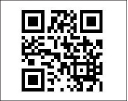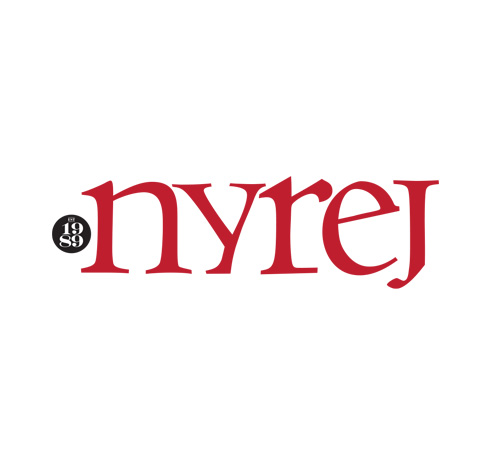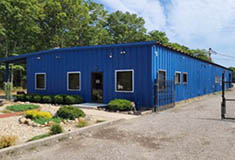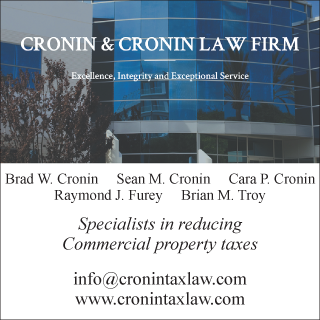Commercial Classroom: Are QR codes coming back? - by Ed Smith

This column is offered to help educate agents new to commercial and investment brokerage and serve as a review of basics for existing practitioners.
In 2010 I wrote the following article. Use of QR codes were active then but seemed to fade away a few years later. The COVID-19 pandemic has seen a resurgence in the use of these “quick response” data icons. Medical and testing facilities are making appointments then sending QR codes to confirm. When they arrive at the facility they simply scan in the code for contactless registration.
Vaccinated residents of Massachusetts are now able to get a digital record of their COVID-19 vaccine history including a scannable QR code, that can be stored on their smartphone and presented to businesses requiring immunizations for entry.
QR Codes in Commercial Real Estate
QR codes have been around for quite a while, originally created in 1994 and used to track parts in vehicle manufacturing. Today, they are finding new applications in the marketing of many products. QR codes are matrix barcodes (two-dimensional codes) that can be read by a QR scanner. Our mobile technology now allows a smart phone or a mobile phone with camera to add a QR scanner program and read the QR code (seen at right).
A QR code is simply a bridge to a website that when scanned with a mobile device takes the consumer directly to that website. This QR codes (above) takes you to my website, www.CommercialEd.com.
You will be seeing these codes on commercial signs in the future. Think of the possibilities for commercial real estate. The buyer or tenant is driving around and sees your sign—they immediately want more information. Scanning the QR on your sign takes them to a website created specifically for that property, or a link to a full presentation of marketing materials for that building, or a video journey through the building. The link could also be to the agent’s personnel web site, a company web site, other listings or just about any URL imaginable.
One of the technical things that need to be considered is whatever webpage or site the customer is directed to must be optimized for viewing on a mobile device.
The application is not just for signs; a QR code can be placed on flyers to immediately bring more information to the consumer about that property or the agent. They can be used as an enhancement on listing presentation materials taking the customer to the agents’ other listings. Some agents are even putting the QR symbol on their cars!
To work with QR’s you need a program to create your QR link and you will need a QR reader application for your mobile device. Just “Google” or otherwise search the internet on your computer and you will find a number of sites to help create your QR symbols and readers. There are a number of sites that provide this service without charge. I have used www.scanlife.com myself. Many people now know of the barcode system but for the benefit of those who don’t, add some small text indicating a QR reader is required and suggest a site where they can find it.
As mentioned earlier a great application is to have the QR take the customer to a video of the property or the agent introducing themselves and their services. Use a QR on your business card and bring the customer to your promotional video. Now, that’s a powerful business card!
The easiest site to help with this is YouTube.com. Create your video, place it on YouTube, then copy the URL of the video, and create your QR code.
Today many cell phones come with built in QR code readers, no apps required. Now “Dynamic QR” codes are editable and trackable. A free QR code generator from Beaconstac’s even supports multi-lingual QR codes. This QR code when scanned converts to the language the user’s smartphone is set to, displaying the message content in the language the user prefers.
A major advantage for use in real estate is speed. The consumer scans the QR code and instantaneously can view a property brochure or video 24/7.
We see these QR codes more and more. They are being used on CT Lottery tickets, restaurants are using them to order food and even pay the bills. Taco Bell and Burger King have introduced them into their ordering systems. Just received my phone and credit card bills with a QR codes now on the envelopes and last night on the CBS news they posted a QR code on the TV to get more information about a topic!
I teach at Westchester Community College, which now requires that anyone going onto the campus must be vaccinated. My vaccination ID card has a QR code on the back for verification purposes.
Considering that many of our future real estate consumers are Millennial- or iGen-aged, and they “live” on their smartphone. It may be time to start integrating QR codes back into our real estate marketing.
A study, posted by Inman, was done in July 2021; it showed that 82% of adults ages 18-44 expected to be using more QR codes in the future. Of the group ages 18-29, 54% had clicked on marketing related QR codes recently.
Edward Smith, Jr., CREI, ITI, CIC, GREEN, MICP, CNE, e-PRO and CIREC program developer, is a commercial and investment real estate instructor, author, broker, speaker and a consultant to the trade.
Suffolk County IDA supports expansion of A&Z Pharmaceuticals


The evolving relationship of environmental consultants and the lending community - by Chuck Merritt
When Environmental Site Assessments (ESA) were first part of commercial real estate risk management, it was the lenders driving this requirement. When a borrower wanted a loan on a property, banks would utilize a list of “Approved Consultants” to order the report on both refinances and purchases.








.gif)
.jpg)